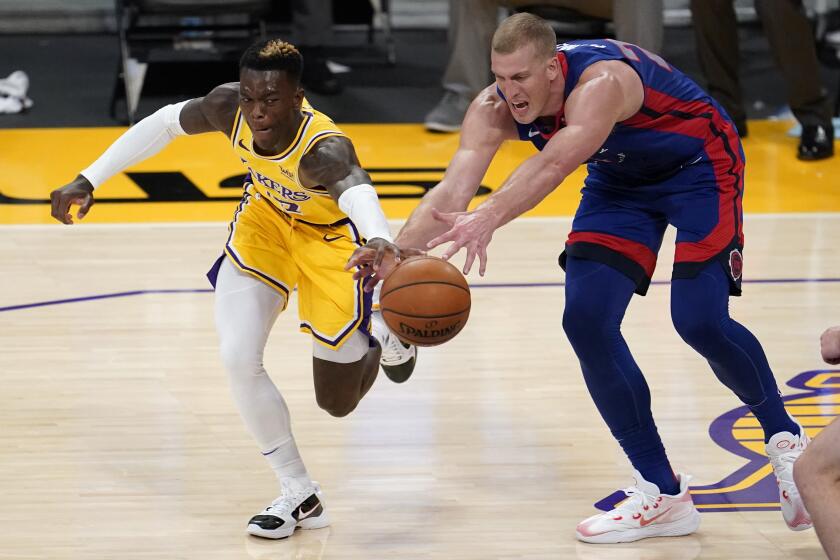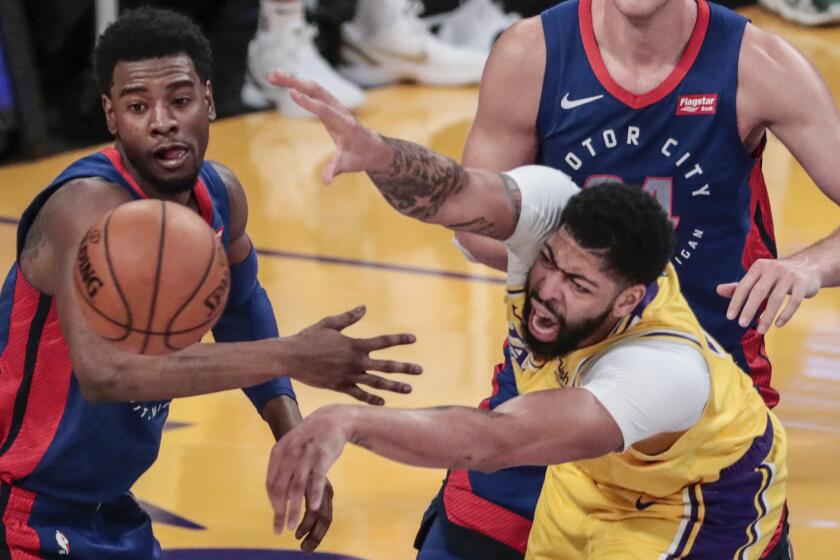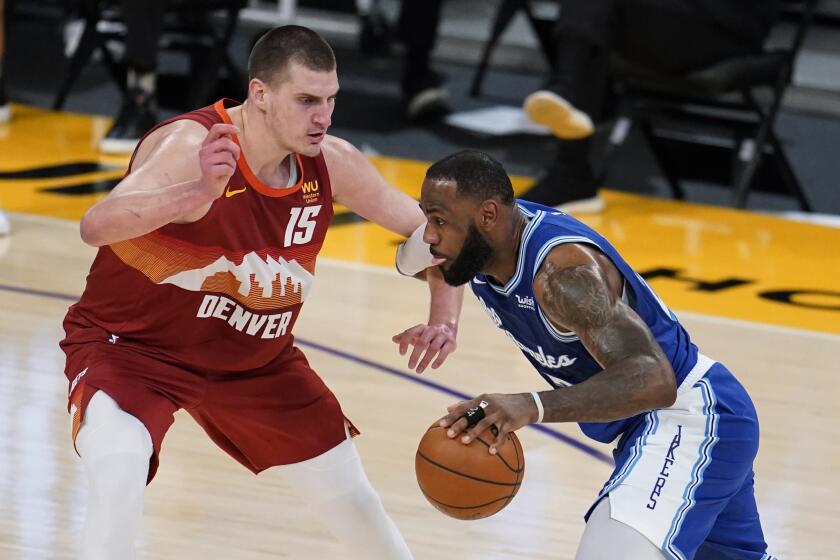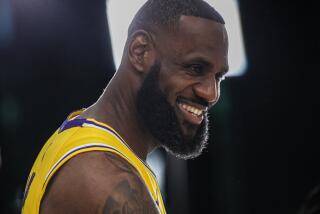The three factors behind LeBron James’ age-defying dominance

- Share via
The Cleveland Cavaliers jersey hung off of LeBron James’ 18-year-old body like an open parachute, pulling away from his back as he sprinted down the court with the ball on his way to a violent encounter with the rim.
He’d played only eight games as a professional when Frank Vogel, then an assistant coach with the Boston Celtics, saw James’ name on an NBA scouting report.
Force him left? Blitz him in pick-and-rolls? Make him settle for jumpers? It’s been more than 17 years. The details are fuzzy. One thing about competing against that teenager is still etched in the Lakers coach’s mind.
“I didn’t really believe his age,” Vogel said on a videoconference.
More than 1,500 games later, people still are in disbelief. As Vogel’s colleagues sit in front of screens trying to dissect the defending NBA champions and their star, the sight of a 36-year-old James playing like this? It’s almost too much.
“Holy s---,” Denver coach Michael Malone chuckled as he watched James on game film this season. “How are we going to stop this guy?”
It took two overtimes for the Lakers to beat the Detroit Pistons on Saturday, when Dennis Schroder had 22 points in 40 minutes of stellar play.
The answer: You’re not going to be able to — not when he’s somehow better today than he was yesterday, still in a prime that’s stretched across the last decade.
“I’ve just never put a ceiling on my potential,” James said.
It’s a phrase he’s uttered multiple times in the last month, when he’s made a convincing case that he’s on his way to becoming the NBA’s oldest most valuable player. Karl Malone is the oldest to be MVP at 35 in 1999, which eclipsed Michael Jordan’s 34 from the previous season.
“There’s no one more valuable than LeBron,” teammate Jared Dudley said. “Now there’s people like [Kevin] Durant playing phenomenal, Kyrie [Irving], out of his mind, you know, Kawhi [Leonard] and Paul George — but what LeBron does on a day-to-day basis, man, it’s unmatched.”
There’s pride in doing it at 36, just like there’s respect for Tampa Bay quarterback Tom Brady, defying age to lead a team to the Super Bowl at 43.
“We can still play this game at a high level no matter how many miles, how many games, no matter how many doubters, no matter the statistics in our respective profession at our age,” James said. “We can still dominate our sport.”
So how has James pulled this off, figuring out a way to stay at the top of the league longer than any of his peers? It’s a combination of three distinct factors — an ever-evolving skill set, a devotion to his health and fitness and an ever-expanding mind.
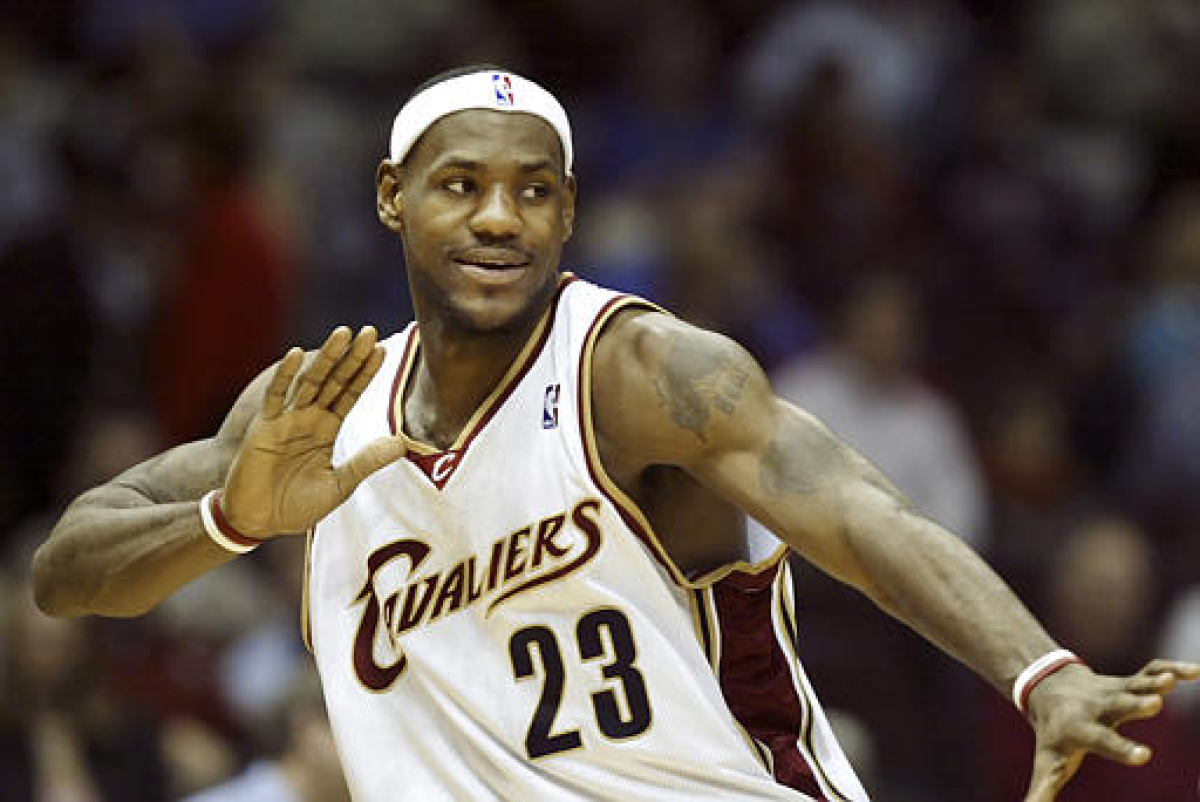
“The more he’s out there, the better we have a chance to win. ...So, for him to have the mindset to be out there every night, it really helps our culture.”
— Frank Vogel, Lakers coach
“He does everything better than he did five or six years ago, which was supposed to be his prime,” Philadelphia 76ers coach Doc Rivers said.
Now in his 18th season, James is shooting the basketball from deep better than ever, a necessary evolution as the game has embraced high-volume three-point shooting. One season after leading the NBA in assists, he’s averaging 25.5 points by becoming a bigger threat from deep.
In 24 games, James has made 66 three-pointers. Michael Jordan made more than 66 in a season only four times in his career. In 79 games as the rookie Vogel marveled at, James made only 63 triples.
“I feel like I’m a better player than I was last year,” he said. “I feel like I can beat the defense at any facet once I cross half court.”
It wasn’t always the case. Prior to this year, he was making only 34.4% of his threes. In 2014-15, James’ first year back in Cleveland, teams in the playoffs sagged off of him, watching him shoot a dreadful 22.7% on 110 attempts from three-point range.
The Lakers struggled mightily in their 135-129 double-overtime win, allowing the Detroit Pistons to rally from a 17-point deficit, but big shots by LeBron James and Anthony Davis saved the day.
“For years, people always said you’ve got to make LeBron beat you with the jump shot,” Malone said. “Take everything else away.”
But as he’s looked around and seen a changing league, James has shot threes more frequently and worked himself into a player who not only launches a lot, but also connects.
In his rookie season, six players took at least six three-pointers per game. This season, 52 players are doing it, with James one of 16 making more than 40%.
“You have to change with the times,” James said.
In the last month, James has made dagger threes late in games against Cleveland, Atlanta and against Detroit. All things considered, teams still prefer James take those shots — but it’s getting harder to stomach.
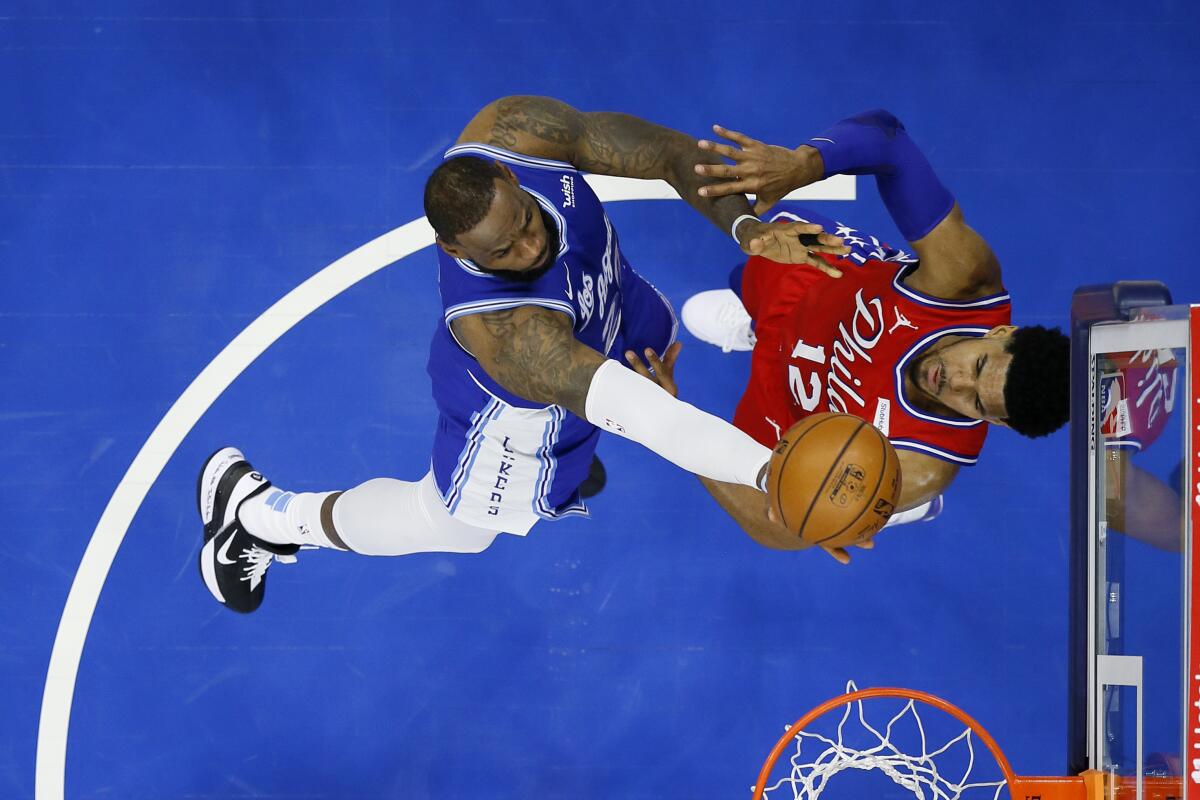
“He’s obviously smarter. He’s just so at peace with his game. I think that’s what I see more than anything.”
— Doc Rivers, Philadelphia 76ers coach
“You still have got to keep him out of the paint because his paint attacks create fouls, create other threes for other people and create easy twos. If you have to pick a poison, you still have to pick it,” Rivers said of James’ jump shooting. “It’s just more poisonous.”
The shooting improvements are amplified by James’ remarkable durability, even after a 71-day offseason, the shortest in history, disrupted his typical recovery and rebuilding plans with longtime trainer Mike Mancias.
There were discussions about James and “load management,” with the star, his coach and general manager Rob Pelinka all considering it an option. So far this season, James hasn’t missed a game.
“The more he’s out there, the better we have a chance to win. But I think it also sets a tone for our whole group, that we’re going to try and play, that every game has an importance to build the habits that we’re trying to build,” Vogel said. “And the one habit we’re trying to build is winning. So, for him to have the mind-set to be out there every night, it really helps our culture.”
Lakers star LeBron James called the plan to hold a 2021 NBA All-Star game in March during the COVID-19 pandemic a ‘slap in the face’ to players.
It’s not a new thing, James’ commitment to his body tracking to early in his career when Malone, then an assistant in Cleveland, witnessed it first-hand.
“Everyone never gave him credit for the work ethic he had and the amount of time he put into his craft, into his body — after practice, before practice, in the weight room,” Malone said. “People would just say, ‘Oh, he’s just a freak athlete.’ I think that was always doing him a disservice.”
The results are obvious, James maneuvering past defenders 10 years his junior, combining strength, speed and agility to still get to the rim when he wants.

“This guy is moving like a 21-year-old,” Pistons coach Dwane Casey said.
The continuously evolving skills and physical sustainability are married with James’ basketball IQ, long regarded as special.
Rivers remembered James going from a player to whom the defense could dictate to a player who was identifying defensive schemes and sets within seconds, melding his supreme skill with a spongey mind eager to add new information.
As that information has continued to compile over 18 seasons, it’s made him more dangerous.
“He’s obviously smarter. He’s just so at peace with his game,” Rivers said. “I think that’s what I see more than anything.”
When Brad Stevens was hired in Boston to help rebuild the post-Rivers Celtics, he entered a league where James was the best player, having just won his fourth MVP in five seasons. Now Stevens is one of the NBA’s longest-tenured coaches, and he’s working to try to beat James and the Lakers, the 36-year-old superstar still the best player every night he steps on the court.
“The bottom line is if anything, I think LeBron has continued to improve. You see it in so many different areas, so many different ways,” Stevens said. “…You know, there aren’t many guys like him who can play this well, this late. But there weren’t that many guys like him before he got to this point.”
With James, there’s really been no before or after. It’s just one gradual climb, the graph measuring his greatness still moving up as James is playing his best basketball in his 18th season.
“It is,” Malone said, “certainly mind-blowing.”
UP NEXT
VS. OKLAHOMA CITY
When: 7 p.m., Monday
On the air: TV: Spectrum SportsNet; Radio: 710, 1330
Update: The Lakers have two with the rebuilding Thunder at Staples Center this week, a chance for the team to re-establish focus after a strained win Saturday against Detroit in double overtime. Led by former Clippers guard Shai Gilgeous-Alexander, Oklahoma City is playing young players including forward Darius Bazley. The Thunder (10-12) are more dangerous than their record or talent suggests.
More to Read
All things Lakers, all the time.
Get all the Lakers news you need in Dan Woike's weekly newsletter.
You may occasionally receive promotional content from the Los Angeles Times.

